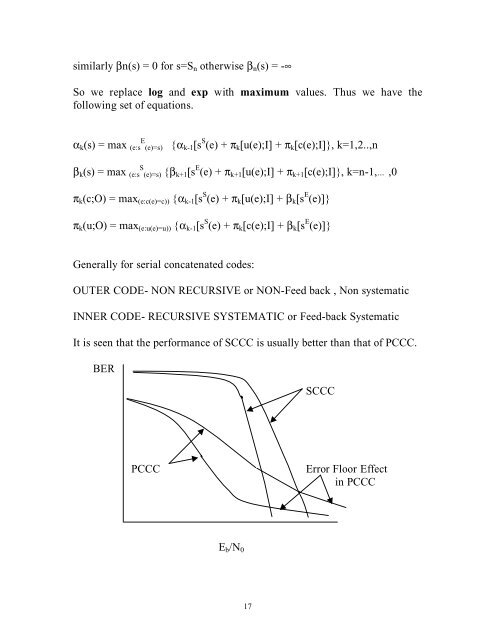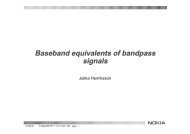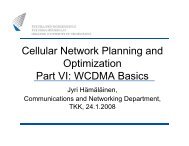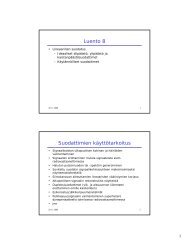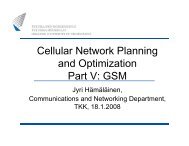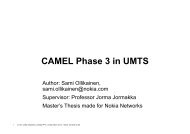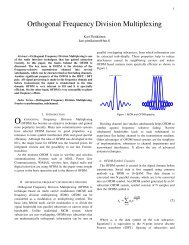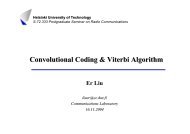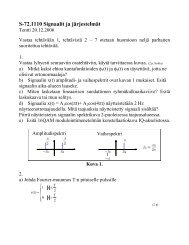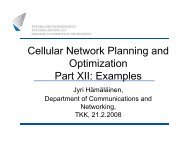Lecture notes on turbo codes.
Lecture notes on turbo codes.
Lecture notes on turbo codes.
You also want an ePaper? Increase the reach of your titles
YUMPU automatically turns print PDFs into web optimized ePapers that Google loves.
similarly βn(s) = 0 for s=S n otherwise β n (s) = -∞So we replace log and exp with maximum values. Thus we have thefollowing set of equati<strong>on</strong>s.Eα k (s) = max (e:s (e)=s) {α k-1 [s S (e) + π k [u(e);I] + π k [c(e);I]}, k=1,2..,nSβ k (s) = max (e:s (e)=s) {β k+1 [s E (e) + π k+1 [u(e);I] + π k+1 [c(e);I]}, k=n-1,… ,0π k (c;O) = max (e:c(e)=c)) {α k-1 [s S (e) + π k [u(e);I] + β k [s E (e)]}π k (u;O) = max (e:u(e)=u)) {α k-1 [s S (e) + π k [c(e);I] + β k [s E (e)]}Generally for serial c<strong>on</strong>catenated <strong>codes</strong>:OUTER CODE- NON RECURSIVE or NON-Feed back , N<strong>on</strong> systematicINNER CODE- RECURSIVE SYSTEMATIC or Feed-back SystematicIt is seen that the performance of SCCC is usually better than that of PCCC.BERSCCCPCCCError Floor Effectin PCCCE b /N 017


